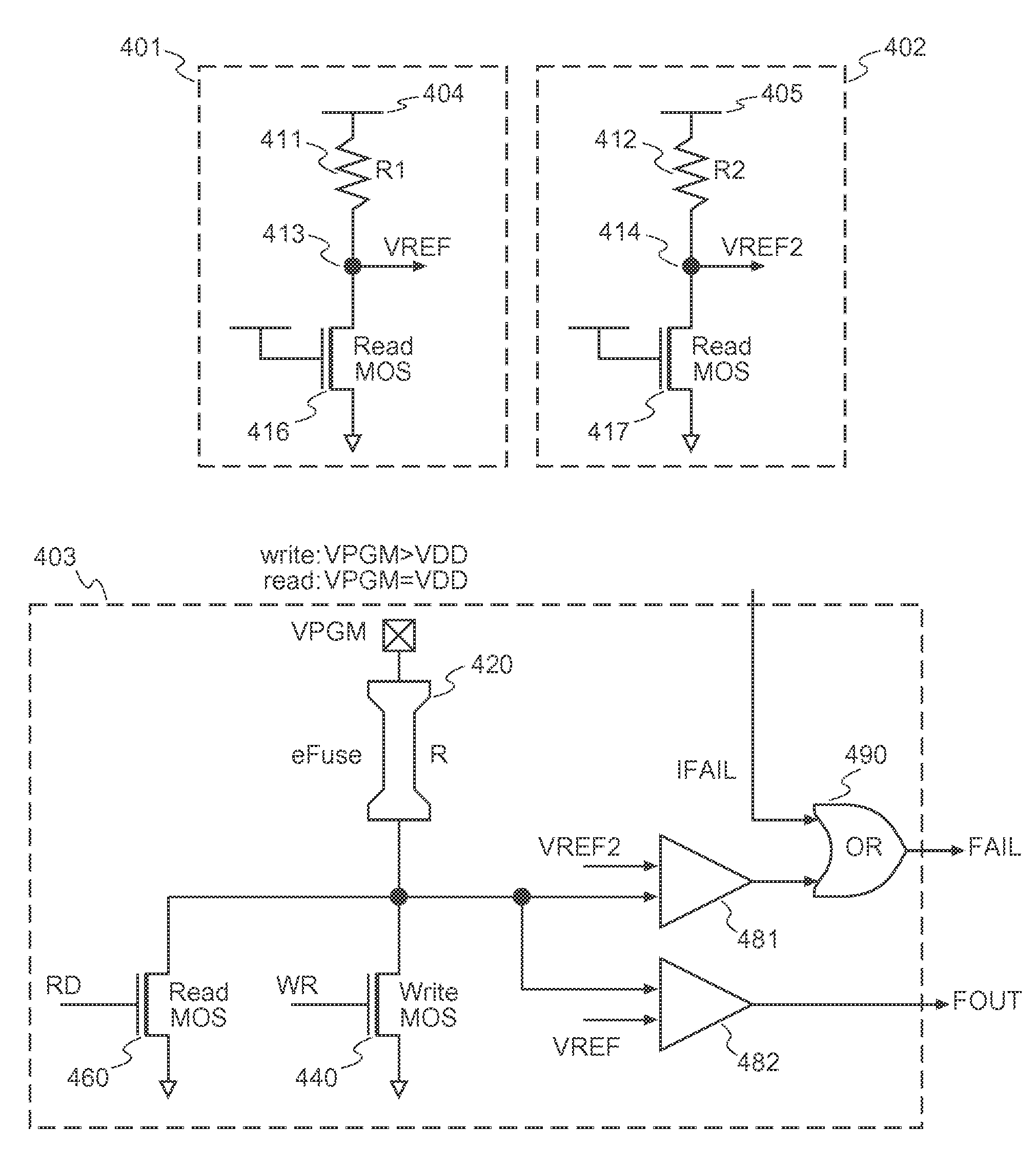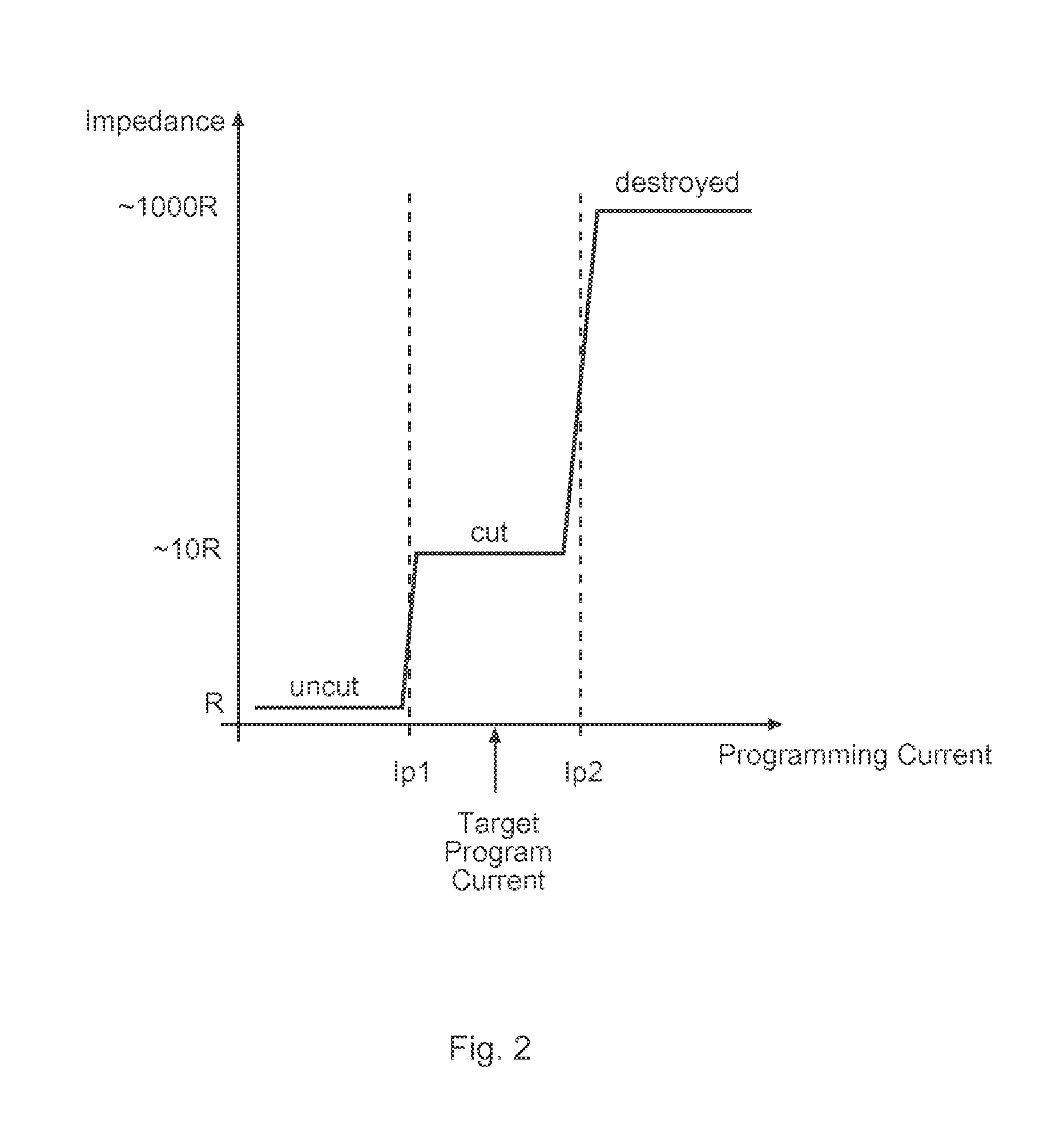Systems and Methods for Determining the State of a Programmable Fuse in an IC
a programmable fuse and ic technology, applied in the direction of resistance/reactance/impedence, instruments, semiconductor/solid-state device details, etc., can solve the problem that the use of this type of fuse is the minimum size of such fuses, and the laser may not be able to accurately cut the fuses
- Summary
- Abstract
- Description
- Claims
- Application Information
AI Technical Summary
Benefits of technology
Problems solved by technology
Method used
Image
Examples
Embodiment Construction
[0028]One or more embodiments of the invention are described below. It should be noted that these and any other embodiments described below are exemplary and are intended to be illustrative of the invention rather than limiting.
[0029]Broadly speaking, the invention includes systems and methods for detecting the state of a fuse or set of fuses in a device such as an integrated circuit. The fuse can be in any one of a set of states which can be determined by passing a current through the fuse, measuring the corresponding voltage (or voltage drop) and then comparing the voltage to a set of reference values.
[0030]Before describing the invention in detail, it is helpful to understand how a fuse is programmed. This generally entails directing a large current through a fuse in such a way as to drive up the impedance. Typically, this increase is achieved through damage to the fuse itself. In a simple fuse, a conductive (metal) link is melted or evaporated by an excessive current, making the...
PUM
 Login to View More
Login to View More Abstract
Description
Claims
Application Information
 Login to View More
Login to View More - R&D
- Intellectual Property
- Life Sciences
- Materials
- Tech Scout
- Unparalleled Data Quality
- Higher Quality Content
- 60% Fewer Hallucinations
Browse by: Latest US Patents, China's latest patents, Technical Efficacy Thesaurus, Application Domain, Technology Topic, Popular Technical Reports.
© 2025 PatSnap. All rights reserved.Legal|Privacy policy|Modern Slavery Act Transparency Statement|Sitemap|About US| Contact US: help@patsnap.com



